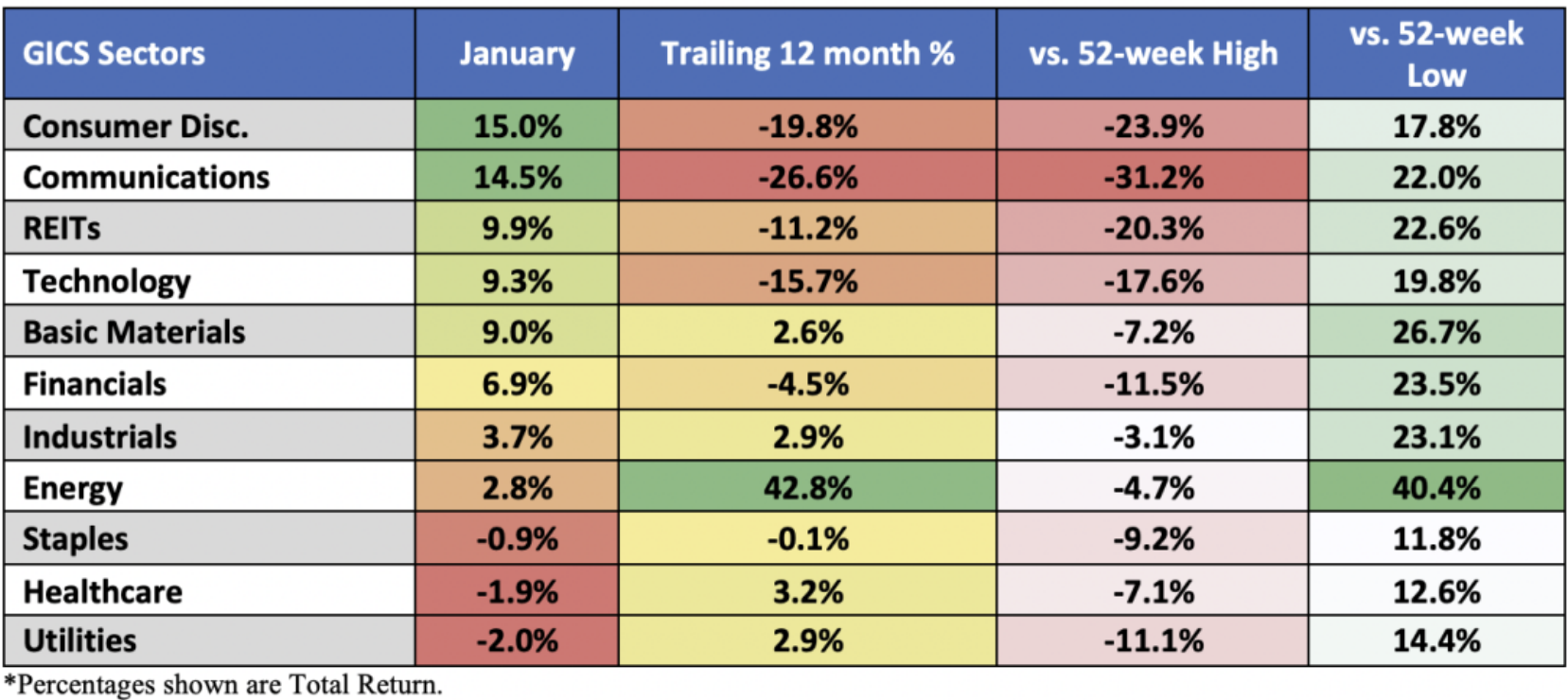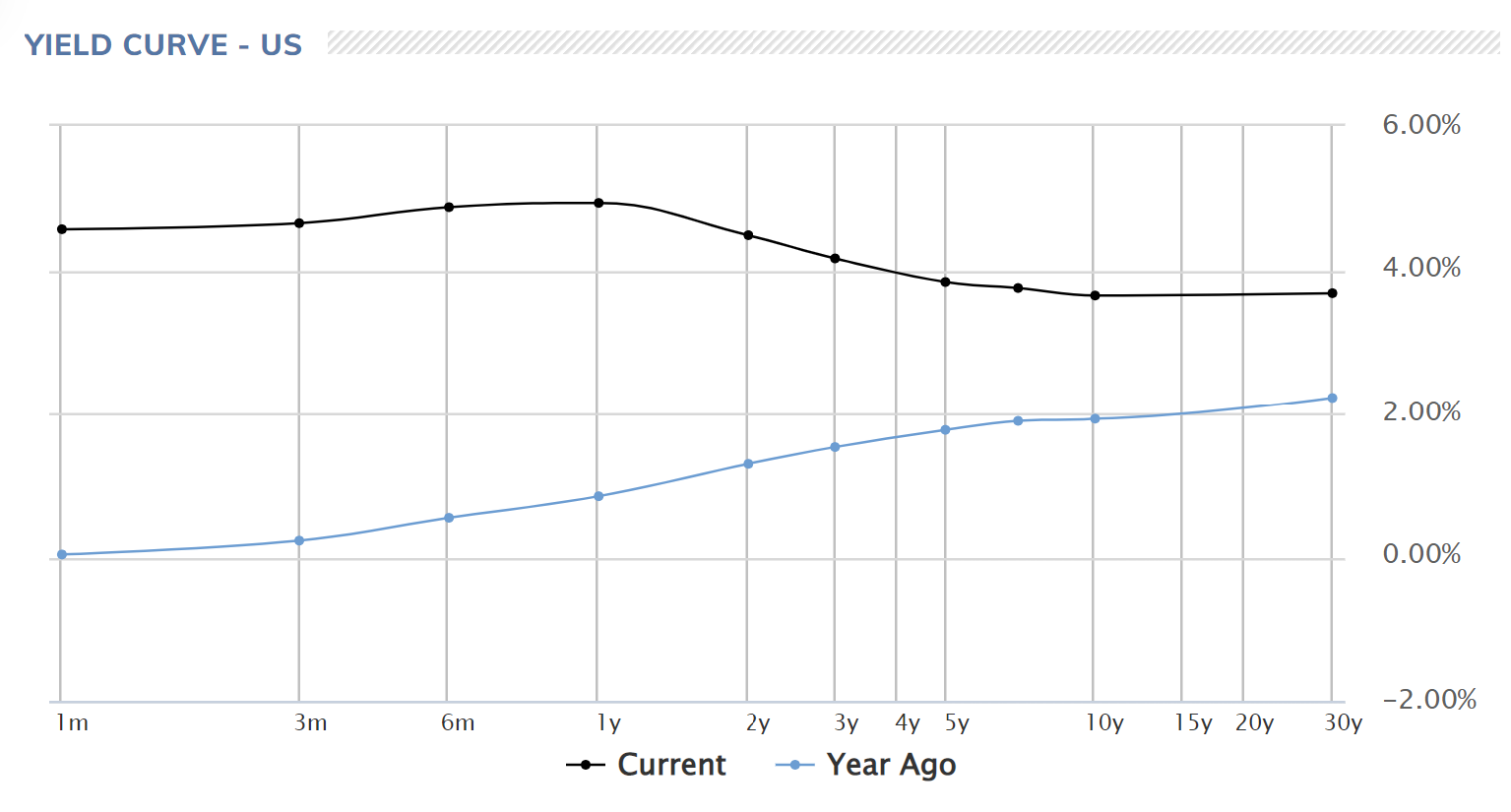January 2023 Market Update
After a dismal year for both equity and fixed-income returns, markets commenced 2023 recording strong January gains. Some of 2022’s biggest losers, including growth, real-estate and consumer discretionary stocks, lead the January rally as investors appear optimistic that the worst is behind us. Many global benchmarks remain below their long term average PE ratio, implying that much of the downside risk has already been priced in.
Figure 1: Sector performance total return for January (source: NASDAQ.com)
After inflation soared to a multi-decade high in 2022, there is increasing evidence that price pressures have peaked and are beginning to stabilize. Across many major economies, year-over-year inflation has decreased for several consecutive months, albeit still higher than target levels. Assuming inflation continues to trend downward, it is likely that rate hike cycles for most central banks are nearing an end. For December, the U.S. reported an annualized headline and core inflation rate of 6.5% and 5.7% respectively. Some investors believe that the U.S. Central Bank could cut interest rates starting late 2023, as indicated by an inverted Treasury yield curve for short-term maturities. It remains to be seen whether this disinflationary trend is transitory or permanent, with some concern that core inflation is passing from goods to services.
Figure 2: U.S. Yield Curve Current vs Year-Ago (source: marketwatch.com)
Recession worries still loom as investors look towards economic indicators for a sign of the economy's health. Markets observed a bout of announced layovers in January, primarily in the tech sector. This came alongside moderating corporate earnings growth, softening consumer spending, a weakening housing market and a decline in global manufacturing. While these indicators flag slower growth momentum, they are at odds with both a strong labor market and resilient economic growth, a sign that the economy may be poised for a softer landing. As monetary policy displays lagged growth dampening effects, the oncoming months will present a better picture of the true recessionary risks.
Asian equities had a strong January, boosted by positive sentiments from China's reopening, an increase in pro-growth policies, and announcements of further support for the property sector. The Hang-Seng index ended January more than 50% higher than its October lows.Global investors are turning more optimistic on Chinese equities after Q4 GDP results beat expectations, and the government loosened COVID-19 restrictions faster than expected.
Figure 3: January 22 marked Chinese Lunar New Year
For the remainder of 2023, the inflation trajectory remains the biggest unknown. Continued signs of moderating inflation will likely allow policymakers to scale back their tightening campaigns, allowing the lagged monetary policy impacts to take place. Should a softer landing be accomplished, investors could see a strong year for both global bonds and equities. We will look toward economic indicators for further guidance on recessionary risks.



